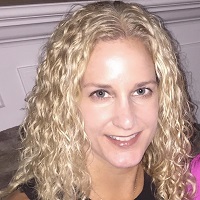As the first Texas public institution of higher education, Texas A&M has the second largest student body in the United States and is known for a set of core values: excellence, integrity, leadership, loyalty, respect, and selfless service. Whether you are faculty and staff, or current and former students, “Aggie Pride” is rooted in history and tradition, much like the university itself.
Recently I had the opportunity to speak with Leonarda Horvat, Director of Research Information Systems, located at Texas A&M’s flagship University in College Station, TX. In the early 90s, Leonarda was at another institution and selected Oracle Database as the best database offering in the market. “It was the best when it comes to features and performance and the other thing, we didn’t know which of these relational databases that were in the market would survive? We selected Oracle and we selected well.” Since then, Leonarda has been in different roles at the Texas A&M information technology teams, but her duties always included overseeing systems using Oracle Databases.
In 2018 the research information systems department was running their application Maestro on legacy hardware that was approaching end-of-life and they needed to find a replacement infrastructure to support 15K users with up to 8K researchers across all Texas A&M System Universities. “We needed better performance, so it was time to refresh to better and faster machines, that was possible in the cloud so that hardware maintenance becomes part of vendor’s responsibility. The idea of using Oracle Exadata Cloud@Customer for the A&M shared services enterprise and their Banner student systems came at the right time because it was a great solution for the Maestro system too. “Another key reason for choosing Exadata Cloud@Customer was the cost of licensing for database tools. With the Exadata Cloud@Customer package, all the database tools are included in the subscription model. And for Leonarda and her team, this was a big win. “I am getting a fast machine, and all the tools in the package which is something we could not afford earlier, so that is why this was a great solution for us and we were the first of all A&M universities to implement.”
Texas A&M also liked Exadata Cloud@Customer because they could maintain data sovereignty by having the infrastructure in their data center, behind their firewall, and keeping their student and financial data onsite. The other benefit gained was better latency between their two data centers to support Disaster Recovery (DR). “Now we have the primary data center in College Station, TX and we have the same infrastructure in a commercial data center in Austin, TX that serves as our DR center. This was a big win to have secure recovery while being miles apart.”
While Exadata Cloud@Customer is onsite, it is managed remotely by Oracle. This was an important benefit regarding their support contract for hardware and monitoring hardware. “Oracle will call us and fix the issue, it is very nice because we do not have to worry about it, it’s nice after so many years having to worry about every single piece, now we have Oracle to help.” Another feature that Leonarda liked was having the flexibility to burst. “We have what we purchased, but if we need more resources it’s available on this machine, we pay a little extra to burst, and then we are back to our current environment which was an additional resource we didn’t have before Exadata Cloud@Customer.”
Texas A&M researchers are leveraging this infrastructure to access the systems 24×7 to check on accounts and finances for the numerous research projects that are always in motion. “This process before Exadata Cloud@Customer would take up to 10 seconds and now it is down to 2 seconds, which was a huge improvement. I got so many thank you’s, it was like I cannot believe it is this fast. It was obvious that something had changed.”
Yet another, but critical, key feature of Exadata Cloud@Customer that drove Leonarda’s decision was advanced security that is included in the package. “Encryption is there and that was one of our goals, to have a secure environment and it came together with this solution. There are so many features and we are working to take advantage of every component like In-Memory Database that is great for real-time analytics, and Active Data Guard, and Multi-Tenant, and now with everything in the package I do not have to think about pricing, etc.” They also enjoyed the patching experience which is easy through the cloud console with a push of a button.
Exadata Cloud@Customer enabled the Texas A&M system to consolidate infrastructure and licensing to reduce the administration of contracts. “We are on the path to accomplishing consolidation across the various universities. We can do this by showing our success with our Oracle environment, that is my mission.” All of this helped streamline the maintenance of 20-30 Oracle Database instances at Texas A&M College Station and the Texas A&M Rellis campus.
We also discussed internal challenges that include a set of new goals the university has set up. For example, Texas A&M Health transitioned into an academic unit of Texas A&M University. Its goal is to develop clinical research partnerships with clinical affiliations, which will help better their community, state, nation, and the world. The other is to promote interdisciplinary programs so experts can come together and try to address important problems facing our society.
In the middle of implementation, Leonarda was asked if she’d be interested in being the executive sponsor and founding member for an independent higher education university user group that Oracle would happily support. With that, HERCULES was founded, with Leonarda as one of the founding members. “The main reason for this group was to connect all higher education institutions, universities, and colleges, that are running business and mission-critical applications in their area on either Oracle cloud infrastructure or Cloud@Customer infrastructure, that is your ticket in.” There are no membership fees, just an idea to facilitate successful deployments and share best practices and lessons learned. “Having so many universities present, it is great because we can share the success of this environment with our members and other Texas A&M Universities. I am very proud of this.”
To learn more: Visit Exadata Cloud@Customer

Leonarda Horvat is an experienced information technology professional in the area of information resource management, project development, and system implementation. As chief information officer and director of information systems at Texas A&M University, College Station, she is responsible for managing agency enterprise information systems, advising on the development of information technology strategies, and serving as a liaison between her company and outside agencies. Additionally, she develops plans, standards, and policies for technical teams, and ensures that they are cost-effective and in compliance with state and federal regulations. She credits her success to her determination, personal drive, and commitment to keeping her knowledge updated.
